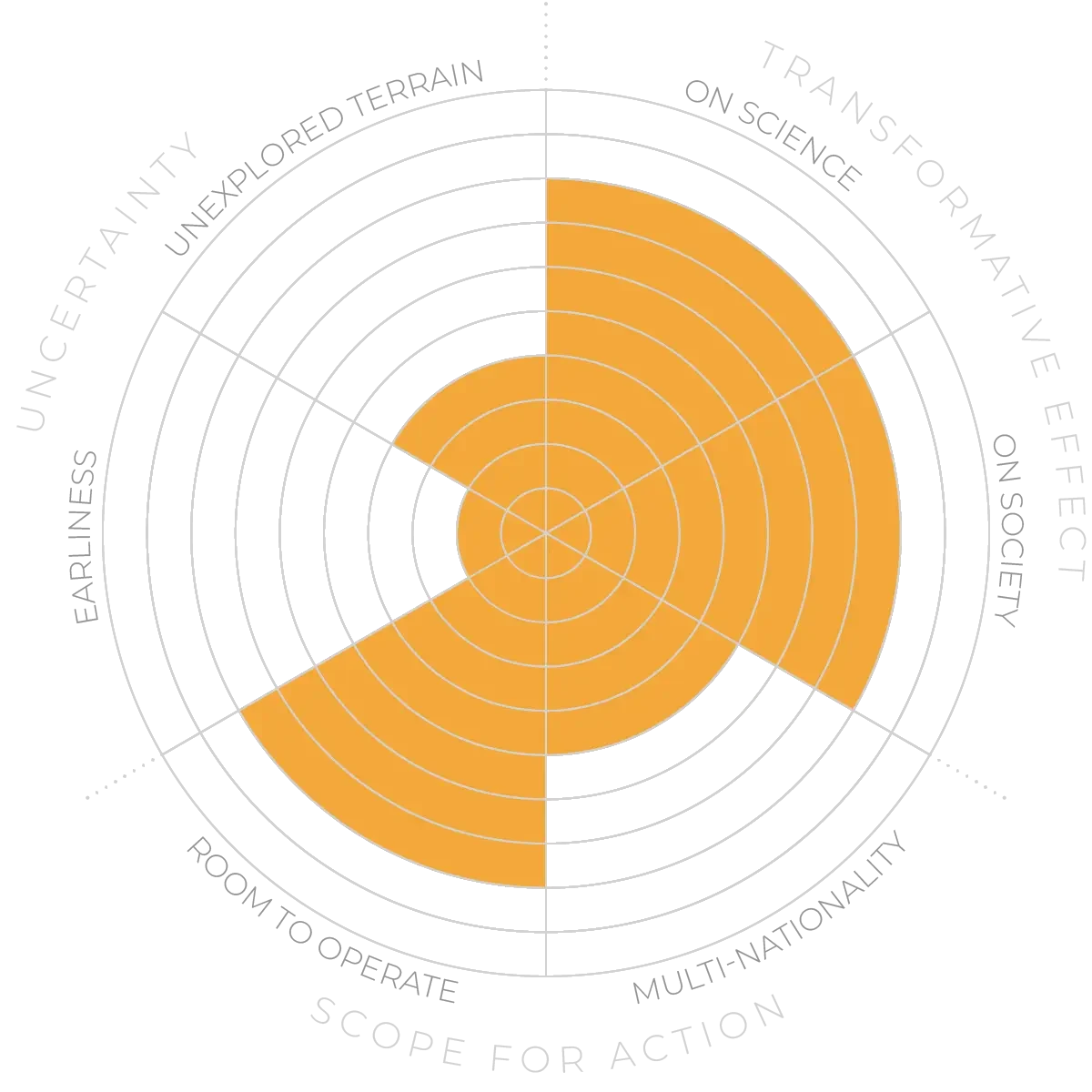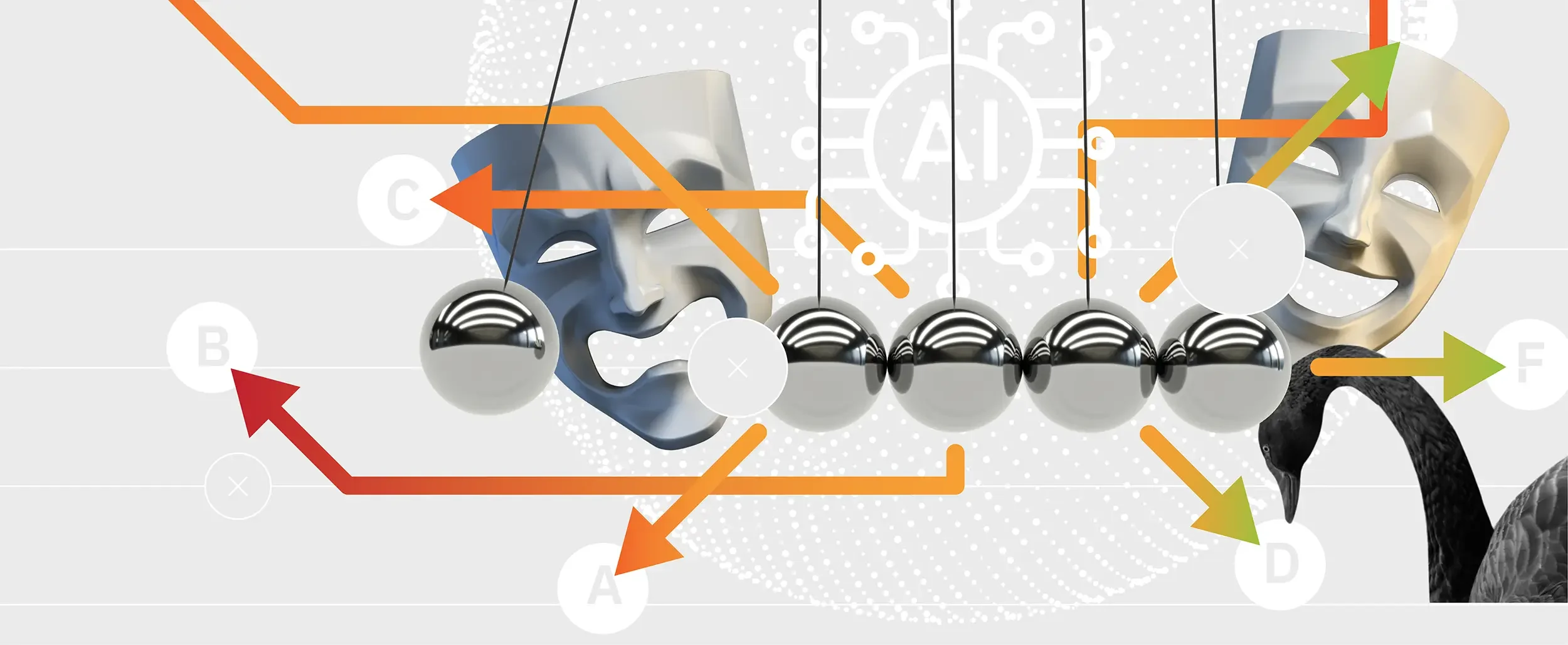Future Horizons:
10-yearhorizon
ML-generated scenarios bring surprises
25-yearhorizon
On-demand scenario creation becomes available
Foresight exercises typically task a group with imagining how a situation will evolve, often using fictional prompts and props as well as real data, knowledge and expertise. This disrupts their conventional thinking, allowing them to anticipate possible outcomes that include novel and extreme possibilities. Synthetic data and machine learning are also now being used to support the creation of unorthodox narratives.22 23
Such techniques may help to address the current tendency of foresight work to identify positive or preferred futures. If we are to truly anticipate what the future may hold, we must also consider uncertain futures, unlikely futures and undesirable futures. This includes widely known concepts like “black swans” and “existential risks”, but further work needs to be done to map and understand the space of these “unfutures”.24
One strand of development is understanding how unknown and disruptive factors can be envisaged using scenarios or other futures methods and then integrated into the parameters or structure of a quantitative model. A second is an expansion of the application space, to address such issues as identity or the interests of transnational communities.
Scenarios and foresight - Anticipation Scores
The Anticipation Potential of a research field is determined by the capacity for impactful action in the present, considering possible future transformative breakthroughs in a field over a 25-year outlook. A field with a high Anticipation Potential, therefore, combines the potential range of future transformative possibilities engendered by a research area with a wide field of opportunities for action in the present. We asked researchers in the field to anticipate:
- The uncertainty related to future science breakthroughs in the field
- The transformative effect anticipated breakthroughs may have on research and society
- The scope for action in the present in relation to anticipated breakthroughs.
This chart represents a summary of their responses to each of these elements, which when combined, provide the Anticipation Potential for the topic. See methodology for more information.



